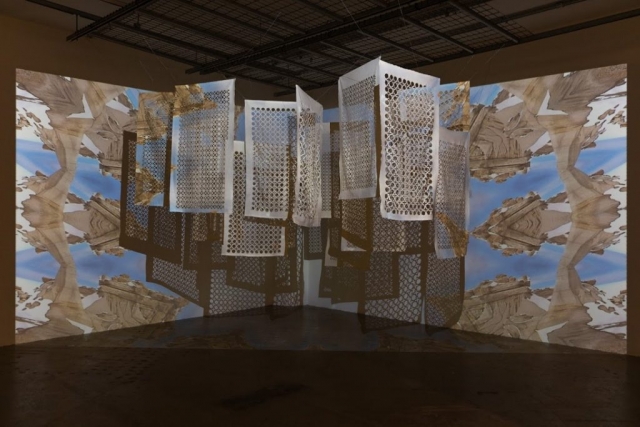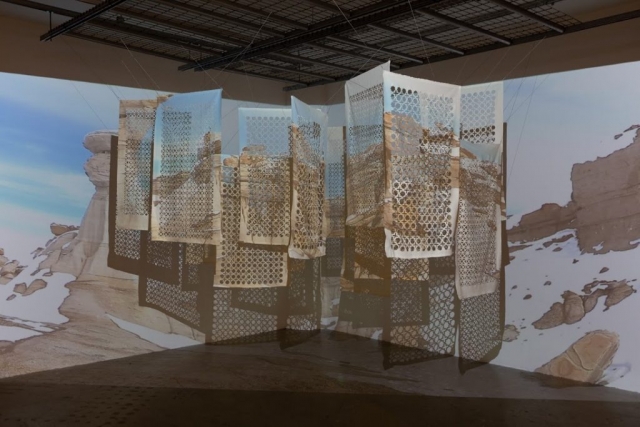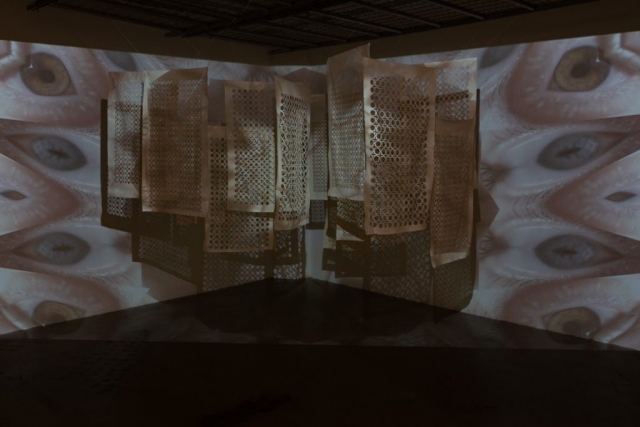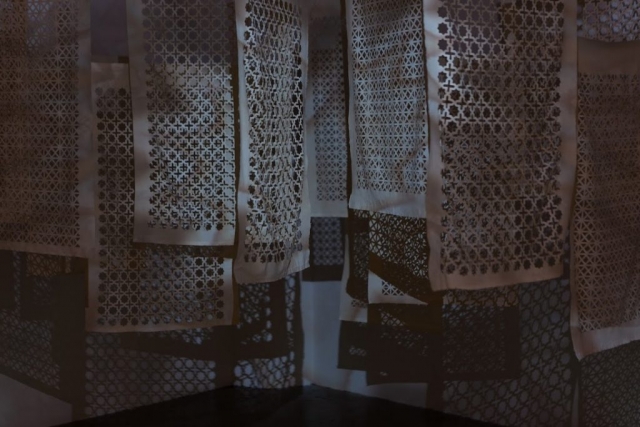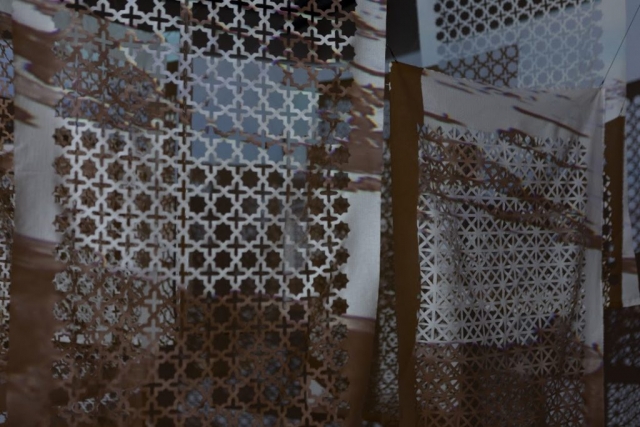FARAH SALEM A., MAATC, LPC
Artwork Title: Power to See
Year: 2019
Medium: Video Installation, Fabric Panels Installation
Artist Statement
Drawing on a quote by author Fadwa El Guindi “Who has the power to see, but not be seen?” The metaphor used is of the Mashrabiya, the wooden lattice work on oriel windows (harem section of the house) is an iconic feature to Islamic architecture. This concept is also incorporated in veiling garments in some parts of the MENA region. In this installation, informed by her cultural background, the artist reinterprets the Mashrabiya screens with the use of fabric to explore portals between visibility and invisibility. The video work shows desert landscapes with rock formations vulnerably exposed to weathering while veiled in layers of snow, along with footage of a shadow figure traveling amongst sand dunes. Landscape tells a narrative of how bodies are exposed to various forces of power and how they respond. The play on kaleidoscopes eco’s the illusive nature found in vision, pattern, distortion of memory, and structure formation. These structures are reflective of the realms of access, agency, and power in personal, social and systematic encounters. This work addresses the politics of seeing with a commentary on systems and power dynamics through an immersive installation focusing on the illusion of structure and its lack of solid foundation.
Click on artwork to read more about it.
ABOUT THE ARTIST
I am an artist and art therapist from Kuwait and practicing in Chicago. I operate from a cross-cultural understanding, and provide bilingual art therapy counseling in both English and Arabic. My art therapy counseling practice is centered within an intersectional feminist and social justice lens, a trauma-informed approach, and a relational-cultural framework. I have offered my services in clinical and community-based settings. My clinical experience includes working with individuals of all ages who are domestic and gender-based violence survivors, refugees and immigrants and people recovering from trauma and substance use. As a multidisciplinary studio artist, my practice is rooted in photography and expands into video, performance, fibers, projection, and installation. I attempt to capture the portals and spaces between two or more worlds, as I engage the performing body in movement from cultural to natural landscapes. My artwork explores the politics of seeing and the roles of access, agency and power in the displacement of identity as a material. As I continue to engage in my own studio practice, I see reflections of my research and material exploration bridge into my clinical art therapy work.
- What drew you to the field of art therapy?
- What drives your current work?
- Where do you see the field going?

